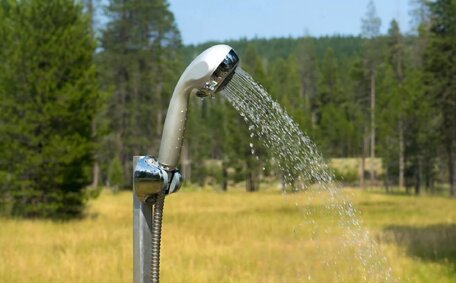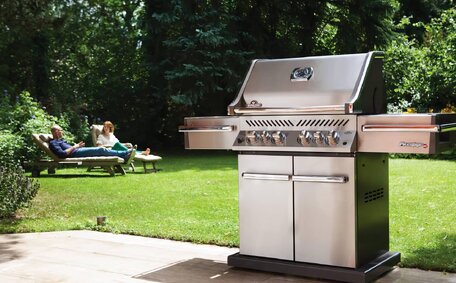Introduction to Hot Water System Efficiency
Proper calibration of solar and electric hot water systems is essential for household efficiency. It can lead to lower energy usage, reduced household expenses, and better performance. This article will outline several effective strategies homeowners can use to enhance their hot water system’s efficiency.
Find more insightful tips on maintaining your system on our website, covering insulating your electric hot water heater tank, tuning settings on powered water heaters to an ideal temperature, and installing accessories like heat traps, regularly draining the tank of sediment, and upgrading to water efficient fixtures.
This guidance can help homeowners save money through increased efficiency. A local licensed plumber is skilled in ensuring optimal calibration of your water heater for peak efficiency.
Continue reading to discover simple DIY steps to boost your water heater’s performance, or contact us for expert advice on enhancing your domestic hot water system.
Insulating Your Hot Water System
Insulating your hot water system, including heat pumps and pipes, significantly enhances efficiency by retaining more heat. Insulation helps minimise heat loss so more energy is conserved for water heating purposes. This means reduced energy consumption and lower energy bills over time through efficient water heating.
We recommend installing high-quality insulation with an R-value suited to your system, generally R3.5 or higher. Properly wrap insulation around your tank, covering every angle and junction to keep your home warm. Also, guarantee insulation on the hot water pipe extends to your hot water tap and showers.
By preventing heat dissipation, insulation enables your system to function optimally. With proper insulation, water stays hotter for longer periods, diminishing the frequency to heat up water. Insulating an older system can dramatically improve performance and efficiency, and for no hot water call us immediately, our experts can guide you through the process.
If DIY insulation seems daunting, contact our team for a quote. Improving insulation can be an affordable way to maximise your system’s efficiency.
Optimizing Temperature Settings
Adjusting your water heater to the proper temperatures can bring significant energy efficiency benefits and cost savings. We guide homeowners to delve into the section below how to check the water heater temperature and adjust it to 60-65°C maximum.
On your gas water heater, locate the valve or control, and perform a check-relight protocol to ensure the pilot flame is efficient. Slowly lower the temperature setting to around 65°C until the pilot light maintains a proper temperature, making sure not to let the water get too high in temperature, ensuring the gas supply line is not squandered and mitigating safety hazards.
Lowering gas water heater settings is effective in reducing unnecessary energy consumption. However, ensure your system maintains enough hot water to prevent bacterial growth. Hot water can still reach 50°C minimum at your taps.
Gradually lower the thermostat by 5 degrees, over several weeks, keeping an eye out for error codes. This gradual adjustment, overseen by a plumber professional, lets you find the sweet spot without disruption. Keep an eye on your usage to avoid running out of hot water within a month and adjust the settings as necessary.
Get in touch if you have trouble accessing your thermostat or want confirmation you’ve optimised temperatures. If you’re pondering 'Who can properly calibrate the temperature hot water of my system?', our licensed plumber professional can inspect and professionally handle it.
Locating the Thermostat
To adjust your hot water systems temperature, you first need to locate the thermostat or control unit. This is usually found on the side or top of the storage water heater, or on the front of continuous flow models.
Safety should be the number one priority when making adjustments. Turn off power to confirm a highly efficient safety protocol between water heater and source before accessing internal components of your gas electric unit. Allow units to fully cool off, preventing any out gas before opening service panels.
Storage tanks typically have an analogue dial or digital readout. Adjust using a screwdriver for the water your heater, being careful not to force settings outside operating limits. For your tankless models, twist the control knob fully clockwise to increase the temperature.
If you’re uncertain about relighting the pilot safely or accessing the thermostat, seek professional advice or contact your local licensed plumber for assistance. A skilled plumber can inspect, test and recalibrate your system to optimal efficiency standards.
Adjusting the Temperature
Always exercise caution when adjusting your hot water system’s temperature. Make sure the power is turned off to electric systems or the natural gas control valve is off before making any changes. Allow units to fully cool first.
Locate the thermostat dial or digital interface and reset your gas control valve. Adjust the temperature settings gradually, in 5-degree Celsius increments. We recommend a maximum of 60-65°C for optimal efficiency.
Adjust further if needed, but don’t go below 50°C to prevent bacteria growth. Please contact us Should you require assistance or have specific model advice, don’t hesitate to contact your trusted plumber.
Getting temperatures right can lead to substantial savings on bills over time. But always call a professional if unsure about safely recalibrating your system.
Installing Heat Traps and Anti-Convection Valves
Heat traps and anti-convection valves are devices that enhance the efficiency of hot water systems.
Heat traps, functioning as a type of relief valve, are simple, low-cost devices fitted to the hot water inlet to prevent cold water from mixing back into the system. They stop hot water coming from mixing back into the colder sections where no water should enter due to convection currents or thermosiphoning.
Anti-convection valves serve a similar function but have an internal mechanism that only allows water supply flow when a tap is turned on. They eliminate standby heat loss.
Installing these valves can lead to savings on energy bills over time. For optimal benefits, all pipes should be insulated too. Contact our team at Peakhurst Plumbing for professional installation and to maximise your system efficiency.
Draining Sediment
More than a minor nuisance, sediment builds up over time at the bottom of storage water tanks. This sediment hampers efficiency by trapping heat and taking up space needed for heating water.
Draining water heaters yearly helps remove sediment so units run optimally. Carefully shut off power/gas and Connect a hose to the tank drain valve to clear up water. Draining water heaters yearly helps remove sediment so units run optimally.
Flush water through until it runs clear.
During draining, catch some hot water in a bucket to assess and reduce the amount while checking the colour. An excessive amount of water or particulates often indicates the need for more frequent draining. Dispose of debris safely before refilling the tank.
Contact our team at Peakhurst Plumbing if you need a professional maintenance service or have any issues.
Low-Flow Fixtures
Installing water-efficient taps and showerheads that control flow rate significantly reduces hot water usage and energy costs. Low-flow models restrict water flow to 6-9 litres per minute, significantly less than the typical 16-20 litres from traditional showerheads.
With a water volume more than adequate passing through, if you need hot water, less energy is required for heating. This directly translates into lower greenhouse gas emissions and electricity or gas costs. Modern low-flow fixtures also deliver good water pressure thanks to aerating technology.
Replacing just a single one of your shower heads can make a measurable difference. Across all taps and showers, the cumulative impact on efficiency and savings is substantial over time. Low-flow sinks, toilets, washing machines and dishwashers also contribute to household conservation.
For guidance on appropriate models or professional installation assistance, reach out to our team at Peakhurst Plumbing. Going low-flow with your fixtures is one of the most effective ways to boost hot water efficiency.
When to Recalibrate Your System
Homeowners should consider recalibrating their hot water system at certain times:
- You experience still no hot water or notice a significant shift in water temperature. If there no hot water or it seems cooler and isn’t lasting as long, the thermostat may need adjusting.
- Your energy bills spike. A sudden increase in gas or electricity costs can cause concerns that your unit might have an issue with efficiency and temperature settings.
- The system’s performance declines. Problems like slow water flow, rumbling noises or longer recovery periods all warrant inspection and possible recalibration.
- You install new low-flow fixtures. Upgrading to water efficient taps or showerheads means less hot water gets used, so the temperature may need lowering.
- It’s been 2-3 years since the last check. We recommend having systems inspected and calibrated at least every few years as part of routine maintenance.
You might wonder, 'What should I consider?' Reducing your hot water temperature, even by a few degrees Celsius, can lead to significant energy savings over time. Regular recalibration also helps maximise efficiency and prolong system lifespan.
For professional assistance inspecting and optimising your hot water unit, contact our team at Peakhurst Plumbing. Keeping temperatures dialled in correctly saves money and energy.
Signs Your System Needs Recalibration
There are several indicators that your hot water system requires recalibration for optimal efficiency:
- Hot water temperature fluctuates or doesn’t remain constant
- Heating cycles seem excessively long or short
- You notice an increase in your energy bills
- Water flow rate from taps or showers drops noticeably
- Odd noises, rattling or rumbling sounds come from the unit
- Recovery time after using hot water takes longer than usual
If you notice any of these signs, your system likely needs recalibrating. For professional assistance inspecting and re-calibrating your hot water unit, contact our team at Peakhurst Plumbing. Keeping temperatures and system settings optimised saves energy and money over time.





